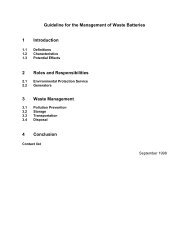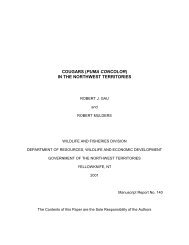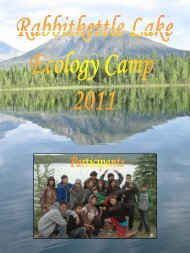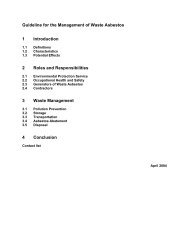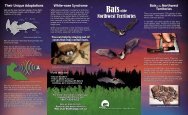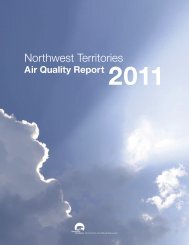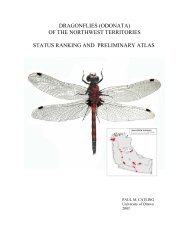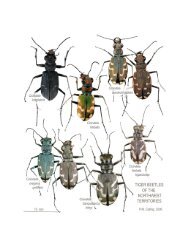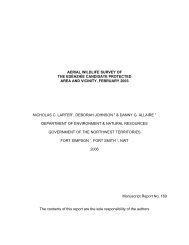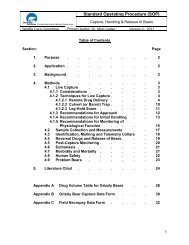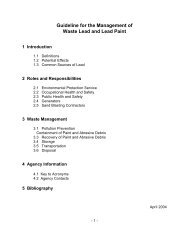WKSS Final Report 1996-2001 - Environment and Natural ...
WKSS Final Report 1996-2001 - Environment and Natural ...
WKSS Final Report 1996-2001 - Environment and Natural ...
Create successful ePaper yourself
Turn your PDF publications into a flip-book with our unique Google optimized e-Paper software.
TED BLONDIN<br />
Chair’s Message<br />
This final report signals a momentous occasion for our Study, <strong>and</strong> one which all those<br />
who have contributed in so many ways can take great pride in. We can look back at a<br />
legacy of success in virtually all areas of our work. We have produced a range of high<br />
quality research on topics related to the regional effects of development. We have<br />
brought traditional knowledge <strong>and</strong> science to bear on these critical research problems<br />
which all the Partners have agreed are of greatest concern. As a Board we have<br />
worked together to give strong, clear direction to this Study, <strong>and</strong> set a st<strong>and</strong>ard for<br />
cooperation which would be difficult to surpass. We have taken steps to accomplish<br />
each of our objectives, <strong>and</strong> done so in a way that brought support from our<br />
communities <strong>and</strong> interest from around the world, <strong>and</strong> which persuaded skeptics that<br />
this kind of Partnership could work – <strong>and</strong> work well.<br />
The Partnership was strengthened in this final year when the Government of Nunavut<br />
(GN) accepted the Board’s invitation to join <strong>and</strong> participate in the Study. GN is the<br />
only new organization to join the Partnership over its five years <strong>and</strong> we welcome it<br />
whole-heartedly.<br />
It is valuable <strong>and</strong> satisfying to look back over the last five years, <strong>and</strong> more, <strong>and</strong> think<br />
about the long way we have come <strong>and</strong> the many good things we have done together,<br />
as partners. But we must also keep clearly in mind our vision of supporting the<br />
achievement of sustainable development through better information for decisionmaking.<br />
Collection of baseline information is only the first step in developing a<br />
monitoring program for cumulative effects of development. There is a great deal more<br />
work to do before we have the baseline information necessary for informed decisionmaking<br />
in this region. More research is needed to complete the picture, <strong>and</strong> much<br />
planning <strong>and</strong> development is needed before a cumulative effects monitoring system is<br />
in place, information needs are defined <strong>and</strong> information gathering systems are in place.<br />
The political situation in the Study area has changed since our work began in <strong>1996</strong>.<br />
The Study area is now shared between two territories, the NWT <strong>and</strong> Nunavut.<br />
Monitoring agencies are in place for each of the two approved diamond mines <strong>and</strong><br />
discussion is taking place about some form of regional rationalization <strong>and</strong><br />
coordination of monitoring to avoid duplication amongst agencies, <strong>and</strong> to increase<br />
efficiency. The Government of Canada has made a commitment to a regional<br />
monitoring framework in the Slave Geological Province (SGP). A major initiative to<br />
develop a cumulative effects assessment <strong>and</strong> management framework is also<br />
xxiv



